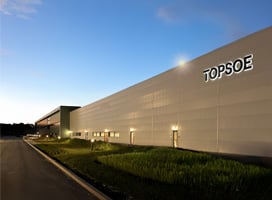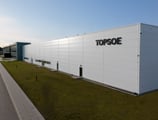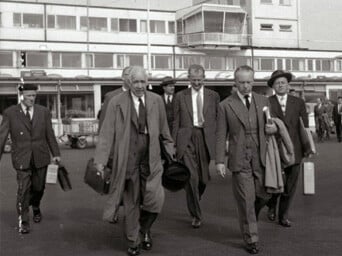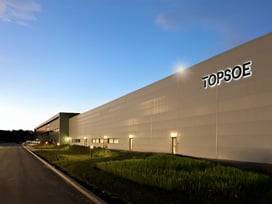Reliable and Efficient Syngas Production for Methanol Plants
In large-scale methanol plants, each added day of operation is worth as much as a million euros. Plant reliability and availability are of utmost importance. Meeting these needs requires continuous equipment development and process optimization. One of the important pieces of equipment used in the methanol production process is the oxygen-fired secondary reformer, where it is commonly employed in the second step of the two-step reforming process. Process gas from the first step, or tubular primary reformer, is reacted with oxygen in the secondary reformer to produce a syngas mixture that is ideal for methanol synthesis.
The secondary reformer is much more compact than the primary reformer. In the secondary reformer, combustion of the process gas hydrocarbon in oxygen causes a temperature rise that provides heat for the reforming reaction. Operating conditions are severe, which places high demands on the individual components of the secondary reformer. These include:
- Robust and long-lasting burner
- Stable refractory lining for pressure vessel
- High-strength target tiles
- Optimally-designed combustion chamber
- High-performance yet robust catalyst
In an optimally designed secondary reformer, the refractory lining makes sure that the heat generated is used to promote the reforming reaction. The lining also protects the pressure shell from excessive temperatures. Proper mixing of the process gas and the oxygen in the CTS burner is another key element in the secondary reformer. Proper mixing helps maintain a well-controlled combustion environment and a uniform gas flow entering the catalyst bed, and it ensures high and durable performance. Finally, target tiles are used at the top of the catalyst bed, which consists of multiple layers of secondary reformer catalysts. These catalysts should be optimally designed to ensure conversion to chemical equilibrium as well as a low and stable pressure drop through the secondary reformer.
The Topsoe secondary reformer has a solid design that meets all the above requirements, providing the methanol market with compact and efficient syngas production. Some of the design features of the Topsoe secondary reformer include a refractory-lined pressure vessel with a proprietary CTS burner, a combustion chamber, zirconium-based HTZR target tiles and an optimized catalyst support system. Topsoe’s secondary reforming catalysts also have a proven record of high performance and durability.
Developments in equipment and catalysts as well as improvements in process optimization are a direct result of Topsoe’s extensive experience and in-depth understanding of industry needs and process details. Topsoe places high priority in helping customers achieve reliable, stable and safe operation. It’s no wonder that syngas units using Topsoe’s oxygen-fired reformers have demonstrated a total plant availability of around 95%, including turnarounds and unplanned shutdowns.
.png)







![SAF Airplane runway[1]-1 1](https://www.topsoe.com/hs-fs/hubfs/SAF%20Airplane%20runway%5B1%5D-1%201.png?width=800&height=640&name=SAF%20Airplane%20runway%5B1%5D-1%201.png)





